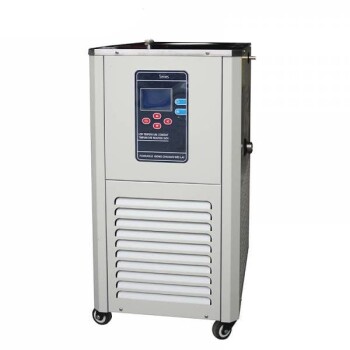When using a vacuum pump, several precautions must be taken to ensure safety, efficiency, and longevity of the equipment. These include selecting the appropriate type of pump for the application, ensuring proper maintenance, and adhering to safety protocols to prevent accidents or damage. Below is a detailed explanation of the key precautions to consider.
Key Points Explained:

-
Selecting the Right Type of Pump
- Not all vacuum pumps are suitable for every application. For instance, a non-lubricated pump should be used in systems requiring cleanliness and low maintenance. This is particularly important in applications like the vacuum hot press process, where contamination from lubricants could compromise the quality of the materials being processed.
- Consider the type of gases or vapors the pump will handle. Some pumps are better suited for corrosive or reactive gases, while others are designed for clean, dry environments.
-
Proper Maintenance and Inspection
- Regular maintenance is crucial to ensure the pump operates efficiently and safely. This includes checking oil levels (if applicable), replacing worn-out parts, and cleaning filters.
- Inspect the pump for leaks, unusual noises, or vibrations, which could indicate mechanical issues. Addressing these problems early can prevent costly repairs or downtime.
-
Ensuring Adequate Ventilation
- Vacuum pumps can generate heat and potentially release harmful gases. Ensure the pump is installed in a well-ventilated area to prevent overheating and to disperse any hazardous fumes.
- For pumps used in high-temperature processes, such as those involving refractory metals like molybdenum or tungsten, additional cooling systems may be required.
-
Handling Hazardous Materials
- If the vacuum pump is used to handle toxic, flammable, or reactive gases, implement safety measures such as gas detectors, explosion-proof equipment, and proper disposal methods for waste materials.
- Use appropriate personal protective equipment (PPE) when operating the pump in such environments.
-
Preventing Contamination
- In applications like thin film deposition or sintering, contamination can severely affect the quality of the final product. Ensure the pump is clean and free from residues that could introduce impurities.
- For processes involving cryogenic grinding or high-temperature deconstruction, ensure the pump is compatible with the materials being processed to avoid cross-contamination.
-
Monitoring Pressure and Temperature
- Continuously monitor the pressure and temperature levels during operation. Exceeding the pump's rated capacity can lead to equipment failure or safety hazards.
- Use pressure gauges and temperature sensors to ensure the pump operates within safe limits, especially in processes like high-temperature deconstruction or sintering.
-
Training and Safety Protocols
- Ensure operators are adequately trained in using the vacuum pump and understand the associated risks. This includes knowing how to shut down the pump in case of an emergency.
- Implement safety protocols such as lockout-tagout procedures during maintenance to prevent accidental startup.
-
Compatibility with Other Equipment
- Ensure the vacuum pump is compatible with other equipment in the system, such as furnaces, presses, or deposition chambers. For example, when using a vacuum pump in conjunction with a vacuum hot press, ensure the pump can handle the required pressure levels and flow rates.
By following these precautions, users can maximize the efficiency and lifespan of their vacuum pumps while minimizing risks to personnel and equipment. Proper selection, maintenance, and operation are key to achieving optimal results in any application involving vacuum technology.
Summary Table:
| Precaution | Key Details |
|---|---|
| Selecting the Right Type of Pump | Choose pumps based on application needs, gas types, and cleanliness requirements. |
| Proper Maintenance and Inspection | Regularly check oil levels, replace worn parts, and inspect for leaks or noises. |
| Ensuring Adequate Ventilation | Install in well-ventilated areas; use cooling systems for high-temperature processes. |
| Handling Hazardous Materials | Use gas detectors, explosion-proof equipment, and PPE for toxic or reactive gases. |
| Preventing Contamination | Keep pumps clean to avoid impurities in processes like thin film deposition. |
| Monitoring Pressure and Temperature | Use gauges and sensors to ensure safe operational limits. |
| Training and Safety Protocols | Train operators on emergency shutdowns and implement lockout-tagout procedures. |
| Compatibility with Other Equipment | Ensure pumps match system requirements, such as pressure levels and flow rates. |
Ensure your vacuum pump operates safely and efficiently—contact our experts today for personalized guidance!















